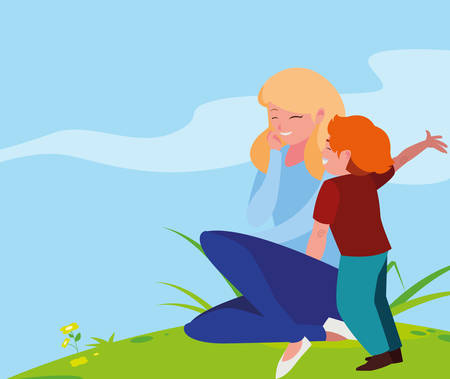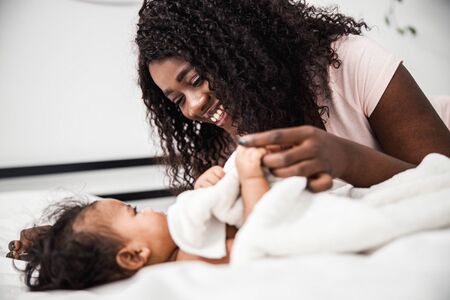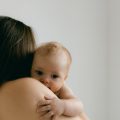Choosing the Right Crib
When it comes to nursery safety, the first step is selecting a crib that provides a secure and cozy environment for your baby. In the U.S., all new cribs must meet rigorous federal safety standards, so always check for certification from the Consumer Product Safety Commission (CPSC) before making your purchase. Look for cribs manufactured after June 28, 2011, as these models comply with updated safety regulations. Make sure the crib slats are no more than 2 3/8 inches apart—about the width of a soda can—to prevent your baby’s head from getting stuck. The mattress should fit snugly against the crib’s frame, leaving no more than two fingers’ width between the mattress and the crib sides to eliminate any risk of entrapment. Avoid drop-side cribs, as they are banned due to safety concerns. Finally, check that all hardware is tightly secured and that there are no missing or broken parts. By paying attention to these details, you’ll be setting up a safe sleep space that gives you peace of mind every night.
Safe Sleeping Practices
Creating a secure sleeping environment for your baby starts with following established guidelines designed to reduce the risk of Sudden Infant Death Syndrome (SIDS) and other sleep-related dangers. The American Academy of Pediatrics recommends specific practices for where and how your baby should sleep. Below, we outline the essential safe sleeping guidelines every parent should know.
Guidelines for Placing Your Baby to Sleep
- Always place your baby on their back: This is the safest position for sleep and naps until your child turns one year old.
- Use a firm, flat mattress: Avoid soft surfaces like sofas, armchairs, or adult beds as they increase the risk of suffocation.
- Keep the crib in your room: The safest place for your baby to sleep is in a crib or bassinet in your bedroom, ideally for at least the first six months.
Recommended Sleep Positions
| Position | Recommendation | Reason |
|---|---|---|
| Back (Supine) | Strongly recommended | Lowers risk of SIDS significantly |
| Side | Not recommended | Easily rolls to stomach, increasing risk |
| Stomach (Prone) | Not recommended | Greatest risk of SIDS and suffocation |
What to Keep Out of the Crib
A clutter-free crib is critical for safety. Remove all items that could pose a hazard to your baby during sleep. Refer to the table below for details:
| Item | Status | Why Remove? |
|---|---|---|
| Pillows & Cushions | Remove | Suffocation hazard |
| Bumper Pads | Remove | Suffocation, entrapment, and strangulation risks |
| Toys & Stuffed Animals | Remove | Suffocation or choking hazard |
| Blankets & Quilts | Remove (use sleep sack instead) | Suffocation hazard; can cover babys face accidentally |
| Loose Sheets or Bedding | Remove (use fitted sheet only) | Tangle or suffocation hazard |
| Cords & Strings (mobiles, monitors) | Keep out of reach or remove entirely | Strangulation hazard if within reach of the crib |
A Few Extra Tips:
- No smoking near your baby’s sleep area.
- Avoid overheating by dressing your baby appropriately and keeping the room at a comfortable temperature.
If you follow these simple but crucial safe sleeping practices, you’ll provide a secure space for your baby to rest peacefully—and give yourself peace of mind.

3. Room Arrangement and Placement
When setting up your babys nursery, thoughtful room arrangement is crucial for safety. The crib should always be placed away from windows to protect your baby from drafts, direct sunlight, or the risk of falling if they eventually learn to climb. Avoid placing the crib under shelves or wall hangings that could fall into the crib.
Keep a Safe Distance from Hazards
Ensure there are no cords—from blinds, curtains, or baby monitors—within arm’s reach of the crib. Dangling cords pose a significant strangulation risk. Secure any loose cords high up and out of sight, or use cord winders to keep them organized and inaccessible.
Consider Electrical Outlets and Furniture
Place the crib at least a few feet away from electrical outlets, heaters, and any heavy furniture that could tip over. Use outlet covers throughout the nursery for added protection. Avoid positioning the crib near items with sharp edges or anything your baby could pull down as they grow more mobile.
Maintain a Clear Perimeter Around the Crib
A good rule of thumb is to keep at least 2-3 feet of clear space around all sides of the crib. This makes it easier for you to access your baby safely and reduces the chance of nearby objects becoming hazards. By following these placement guidelines, you can create a safer sleeping environment that gives you peace of mind every night.
4. Temperature and Air Quality
Maintaining the right temperature and ensuring fresh air in your baby’s nursery are crucial steps to create a secure sleeping environment. Overheating is linked to an increased risk of Sudden Infant Death Syndrome (SIDS), while poor air quality can affect your baby’s respiratory health. Here are best practices every parent should follow:
Ideal Nursery Temperature
The American Academy of Pediatrics recommends keeping the nursery between 68–72°F (20–22°C). This range helps prevent overheating while keeping your baby comfortable throughout the night.
| Season | Recommended Room Temperature |
|---|---|
| Winter | 68–72°F (20–22°C) |
| Summer | 68–72°F (20–22°C) |
Tips for Monitoring and Regulating Temperature
- Use a room thermometer to regularly check the temperature.
- Avoid heavy blankets or overdressing your baby; use a wearable sleep sack instead.
- Place the crib away from direct sunlight, vents, radiators, and drafty windows.
Ensuring Proper Ventilation
Good air circulation prevents stuffiness and keeps indoor air fresh, which is vital for your babys breathing comfort.
- If possible, open windows periodically for natural airflow. Be sure windows are securely locked when closed.
- Consider using a fan to circulate air—just make sure it’s not blowing directly on your baby and all cords are out of reach.
- Avoid smoking or using strong fragrances in or near the nursery.
Air Quality Enhancements
- Use an air purifier with a HEPA filter if allergies or pollution are concerns in your area.
- Regularly clean nursery surfaces and vacuum carpets to minimize dust and allergens.
What to Avoid
- No space heaters or electric blankets—these can cause unsafe temperature fluctuations or pose a fire risk.
- No humidifiers without regular cleaning, as mold can quickly develop inside devices.
By following these guidelines, you’ll ensure that your baby’s nursery stays at a safe temperature and maintains healthy air quality—two essentials for safe, restful sleep every night.
5. Monitoring and Baby Equipment
When it comes to nursery safety, choosing the right monitoring devices and baby equipment is essential for peace of mind and your babys well-being. A reliable baby monitor allows you to keep an eye (and ear) on your little one without constantly entering their room, which helps maintain a restful environment. There are several types of baby monitors available in the U.S., including audio-only, video, and smart monitors with Wi-Fi connectivity. When selecting a monitor, consider features such as range, battery life, image quality, and security.
Tips for Using Baby Monitors Effectively
- Place the monitor out of your babys reach—at least three feet away from the crib—to prevent any strangulation hazards from cords.
- Ensure the monitor’s camera provides a clear view of the crib without being obstructed by bedding or toys.
- If using a Wi-Fi-enabled monitor, choose one with secure encryption and regularly update passwords to protect your privacy.
Equipment to Avoid
Not all products marketed for nurseries are recommended by pediatricians or safety experts. Items such as crib bumpers, sleep positioners, and wearable monitors that claim to reduce SIDS risk have not been proven effective and may even pose safety risks. The American Academy of Pediatrics strongly advises against using these products in your babys sleep area. Stick to essentials: a firm mattress with a fitted sheet, and avoid adding soft bedding, pillows, or stuffed animals.
Stay Informed and Safe
Always check for recalls on nursery equipment and register your products with manufacturers to receive updates. By choosing recommended products and following best practices for installation and use, you’ll help create a secure sleeping environment where your baby can rest safely—and you can relax knowing they’re protected.
Emergency Preparedness
Being prepared for emergencies is a crucial part of nursery safety. While creating a cozy and secure sleep environment is important, it’s equally vital to have safeguards in place for unexpected situations. Here are some essential tips to help you keep your baby’s nursery ready for any emergency:
Install Smoke Detectors and Carbon Monoxide Alarms
Make sure you have working smoke detectors and carbon monoxide alarms installed in or near your babys nursery. Test these devices monthly and replace batteries at least twice a year, such as during Daylight Saving Time changes. This simple habit ensures youll always be alerted to potential dangers like fire or gas leaks.
Keep First Aid Supplies Handy
Have a well-stocked first aid kit easily accessible but out of your baby’s reach. Include essentials like bandages, antiseptic wipes, infant-safe pain relievers, digital thermometer, tweezers, and emergency contact information. Review the contents regularly and replace expired items so you’re always prepared to handle minor injuries or sudden illnesses.
Create an Emergency Plan
Develop a clear plan for what to do in case of fire, severe weather, or other emergencies. Make sure all caregivers know the escape routes and where to meet outside the home. Practice fire drills occasionally so everyone feels confident about getting your baby out safely if needed.
Additional Safety Tips
Keep your cell phone charged and nearby when you’re in the nursery. Post important numbers, such as poison control and your pediatrician, on the wall or fridge for quick access. If your home has security systems or video monitors, ensure they are functioning properly and that everyone who cares for your child knows how to use them.
By taking these proactive steps, you can create not only a safe sleeping environment but also a nursery that’s fully prepared for whatever comes your way—giving you peace of mind while your little one sleeps soundly.

